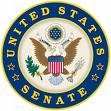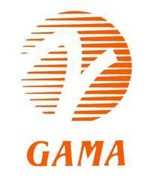Long-Stalled Legislation Finally Passes Significant Legislative
Hurdle
 The U.S. Senate on Monday finally
passed the $34.5 billion FAA Reauthorization bill with a unanimous
93-0 vote. The bill funds the FAA through September 2011, and
establishes clear deadlines for the adoption of existing NextGen
navigation and surveillance technology. For example, the bill
requires the development of Required Navigation Performance (RNP)
and Area Navigation (RNAV) procedures at the busiest 35 airports by
2014, and for the entire National Airspace System (NAS) by
2018.
The U.S. Senate on Monday finally
passed the $34.5 billion FAA Reauthorization bill with a unanimous
93-0 vote. The bill funds the FAA through September 2011, and
establishes clear deadlines for the adoption of existing NextGen
navigation and surveillance technology. For example, the bill
requires the development of Required Navigation Performance (RNP)
and Area Navigation (RNAV) procedures at the busiest 35 airports by
2014, and for the entire National Airspace System (NAS) by
2018.
The bill directs the FAA to accelerate planned timelines for
integrating Automatic Dependent Surveillance-Broadcast (ADS-B)
technology into the NAS, requiring the use of “ADS-B
Out” on all aircraft by 2015 and the use of “ADS-B
In” on all aircraft by 2018, creates an “Air Traffic
Control Modernization Oversight Board” to provide better
oversight of FAA’s modernization programs, and establishes a
“Chief NextGen Officer” position at FAA to oversee
implementation of all NextGen programs, and provide greater
accountability over the modernization process.
 On the issue of airline safety, the
bill mandates that all carriers adopt Aviation Safety Action
Programs (ASAP), Flight Operational Quality Assurance (FOQA)
programs and Line Operations Safety Audit (LOSA) programs. It
authorizing $8.1 billion to support airport infrastructure through
the Airport Improvement Program (AIP), requires airlines to examine
a pilot’s entire flight history, including previous tests of
flying skills, before the pilot is hired and requires air carriers
to implement a formal remedial training program for underperforming
pilots.
On the issue of airline safety, the
bill mandates that all carriers adopt Aviation Safety Action
Programs (ASAP), Flight Operational Quality Assurance (FOQA)
programs and Line Operations Safety Audit (LOSA) programs. It
authorizing $8.1 billion to support airport infrastructure through
the Airport Improvement Program (AIP), requires airlines to examine
a pilot’s entire flight history, including previous tests of
flying skills, before the pilot is hired and requires air carriers
to implement a formal remedial training program for underperforming
pilots.
The FAA will have to re-evaluate pilot training and
qualification regulations to ensure pilots have the proper skills
and experience. Should the FAA fail to do this by the end of 2011,
all air carrier pilots will be required to have logged at least
1,500 flight hours before flying an aircraft with paying customers
aboard. The FAA is also required to revise the flight and duty time
regulations for commercial air carrier pilots and issue the final
rule within one year to address pilot fatigue.
The House and Senate funding measures mirror previous
modernization proposals in that they increase the general aviation
fuel tax from 22 to 36 cents per-gallon to help fund system
transformation.
"After so many years of delay, this bill takes significant steps
to improve safety and modernize our air transportation system,
while supporting jobs and stimulating our economy. I am pleased the
Senate moved quickly to approve this critically important
legislation,” said Senate Commerce, Science, and
Transportation Committee Chair John D. Rockefeller IV.

Senator Rockefeller
Senator Kay Bailey Hutchison, the committee's ranking
Republican, agreed. “This critical legislation is long
overdue," she said. For too many years, our nation has put
off the daunting task of modernizing our country’s antiquated
air traffic control system. Modernization of the country’s
air traffic is crucial to our economic growth and will move America
closer to a more efficient and effective use of our national
airspace. This measure will improve the safety of air travel
for millions of Americans, and represents an important commitment
to the future of aviation in this country.”
Reaction came quickly from several of the nation's aviation
associations.
"NBAA and other general aviation associations have been strong
advocates for proposals to modernize the nation's aviation system,
and the action taken by Senate leaders today marks a good step in
that direction," said NBAA President and CEO Ed Bolen.

Ed Bolen
"Importantly, the legislation builds on the fuel tax to help pay
for modernization, instead of resorting to user fees," Bolen said.
"This approach is the one uniformly supported by general aviation
to help pay for 'NextGen'."
Bolen noted that throughout the FAA reauthorization process,
NBAA and other general aviation organizations have pointed out that
unlike user fees, fuel taxes are paid at the pump, making them an
efficient, effective, reliable and environmentally sensible way for
those using general aviation aircraft to help pay for FAA funding
and infrastructure investments.
"We look forward to working with leaders in both the House and
Senate toward passage of final legislation to modernize the
nation's aviation system so that it remains the world's largest,
best and safest," Bolen concluded.
 GAMA issued the following statement
upon passage of the bill late Monday afternoon:
GAMA issued the following statement
upon passage of the bill late Monday afternoon:
"We are extremely pleased with the
passage of this bill which takes a number of critical steps needed
for the acceleration of NextGen," said GAMA's President and CEO,
Pete Bunce. "We commend Senators Rockefeller (D-WV),
Hutchison (R-TX), Dorgan (D-ND), DeMint (R-SC), Baucus (D-MT) and
Grassley (R-IA) for their leadership and dedicated work in
reauthorizing and improving FAA programs. We look forward to
working with them and the aviation leadership in the House to send
a final FAA reauthorization bill to President Obama for his
signature."
National Air Transportation Association (NATA) President James
K. Coyne praised the Senate for passing the FAA
reauthorization.
"I would like to congratulate the U.S. Senate for approving a
two-year FAA reauthorization bill that is void of user fees and
that provides a fair jet fuel tax increase," stated Coyne. "The
bill also includes several mandates for accelerated implementation
of the Next Generation Air Transportation System (NextGen). While
the House recently approved another extension through July 3, 2010,
I am hopeful that a conference committee can be convened as quickly
as possible to ensure that a comprehensive bill can finally be
approved."
The bill does differ in some way from the House bill passed last
year, and those differences will have to be reconciled in a
House-Senate conference committee.
 ANN's Daily Aero-Linx (05.06.25)
ANN's Daily Aero-Linx (05.06.25) ANN's Daily Aero-Term (05.06.25): Ultrahigh Frequency (UHF)
ANN's Daily Aero-Term (05.06.25): Ultrahigh Frequency (UHF) ANN FAQ: Q&A 101
ANN FAQ: Q&A 101 Classic Aero-TV: Virtual Reality Painting--PPG Leverages Technology for Training
Classic Aero-TV: Virtual Reality Painting--PPG Leverages Technology for Training Airborne 05.02.25: Joby Crewed Milestone, Diamond Club, Canadian Pilot Insurance
Airborne 05.02.25: Joby Crewed Milestone, Diamond Club, Canadian Pilot Insurance







